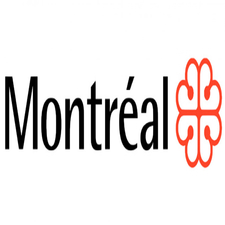Heat island
Type of resources
Topics
Keywords
Contact for the resource
Provided by
Formats
Representation types
Update frequencies
status
-

Territorial representation of day and night surface temperatures for planning, consultation and management purposes.**This third party metadata element was translated using an automated translation tool (Amazon Translate).**
-

Stations for measuring the impact of greening projects on air temperature and humidity. Fifteen stations were installed across the City of Montreal for a period of 10 summers in order to study the impact of urban development on heat. In the long term, the City wishes to install 25 throughout its territory. Better understanding these phenomena is an essential step in order to be able to address the problem of extreme heat in urban areas, which have an impact on the health and well-being of citizens. With this project, the City intends to measure the impact of greening projects on air temperature, train and raise awareness among its staff by participating in a research/action project and raise public awareness of the impact of greening on air temperature.**This third party metadata element was translated using an automated translation tool (Amazon Translate).**
-

Polygons representing priority areas to be greened on the territory of the City of Montreal to reduce the impacts of heat waves. Three priority levels were defined according to a methodology that aimed to meet the following 5 objectives: 1. Reducing the vulnerability of Montreal to heat waves 2. Decrease the area of heat islands 3. Increase the canopy index in the most tree-deficient areas 4. Reducing the impacts of heatwaves on the most sensitive groups 5. Greening living environments as a priority (residential and community sectors) This layer will be used to monitor the evolution of one of the eight indicators of the 2020-2030 Climate Plan [2020-2030 Climate Plan] (https://portail-m4s.s3.montreal.ca/pdf/Plan_climat%2020-16-16-VF4_VDM.pdf), i.e. the number of plantations in vulnerable sectors with a target of 500,000 trees to be planted by the City and its partners. It will also help to better plan and prioritize greening projects that are often expensive (e.g. green roofs, new parks, green corridors, expanded tree planting areas, vegetated overhangs or medians, etc.). The data can also be consulted on the [interactive map of climate change vulnerabilities in the Montreal agglomeration] (https://experience.arcgis.com/experience/944e0b7104bd491591ccca829da24670/page/Page/).**This third party metadata element was translated using an automated translation tool (Amazon Translate).**
-

The land use and development plan puts forward a frame of reference aimed at better knowing, protecting and promoting heritage. The data available in this set mainly comes from the mapping of sections 2.1, 2.3 and 3.1 of the Urban and Urban Plan of Montreal, namely __adaptation to climate change__, __territories of ecological interest__, __territories of ecological interest__, the __green and blue frame__, the __green and blue frame__ as well as __constraints and nuisances__. This urban planning and development plan for the agglomeration of Montreal outlines the main parameters that will guide the Montreal agglomeration council in decisions relating to land use planning in the coming years. From a perspective of sustainable development, this document guides decisions that shape the territory in order to promote compact and greener neighborhoods, increase public and active transportation, support the economic dynamism of the agglomeration and highlight areas of interest. Consult the [interactive map] (https://smvt.maps.arcgis.com/apps/webappviewer/index.html?id=d152aaa85b6f4e9086cecdf10c7456db) of the Planning and Development Plan to visualize the thematic data.**This third party metadata element was translated using an automated translation tool (Amazon Translate).**
 Arctic SDI catalogue
Arctic SDI catalogue